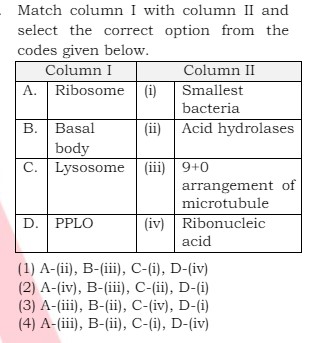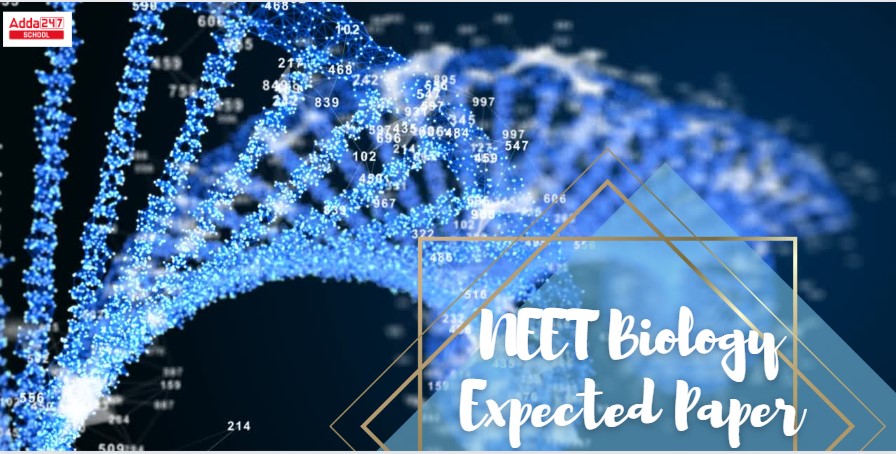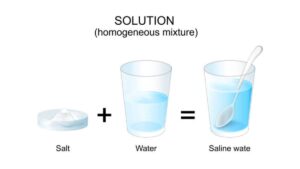NEET Biology Expected Paper 2025 is a collection of important biology questions that students can expect in the NEET UG 2025 Biology exam. These Biology questions are specially set up to focus on the most important parts of the NEET syllabus. Read the full article and download the NEET Biology Predicted paper PDF, solve it, and calculate your score.
NEET Biology Expected Paper 2025
Students can use this Biology NEET expected question paper to measure their NEET preparation level. If you get a lower score than expected, then analyze the questions very well. Make a list of where you are lacking, and note the chapters or topics. Revise the notes again of that particular chapter of the topic. After that practice chapter-wise questions to leave no crumbs in your preparation.
Check |NEET Question Paper 2024, PDF Download with Solutions
NEET UG Biology Predicted Paper 2025
To excel in NEET 2025 exam, aspirants must thoroughly revisit all topics in Physics, Chemistry, and Biology. It’s essential to develop an effective study strategy by recognizing the significance of each chapter in every subject. This PDF includes the important Biology questions for NEET that will assist candidates in navigating the Biology NEET syllabus effortlessly.
Biology Most Expected Questions for NEET 2025
The NEET Biology Expected question paper PDF can be downloaded from the below links. This paper consists of biology’s most important and expected questions which follow the exact NEET exam pattern and difficulty level. practicing these biology questions will give you a good review of important areas of the NEET Biology syllabus.
NEET 2025 Biology Expected Paper
The right way to level up your preparation is to practice more and more questions of all three subjects – Physics, Chemistry, and biology. This NEET Biology expected paper is prepared by our NEET exam experts who have over 9 years of experience in this field. Students can get a proper idea of the paper’s difficulty level, no questions in each section marks distribution, and more.
Also Practice,
NEET Biology Sample Papers 2025 PDF
Here we are presenting more NEET practice papers for all subjects. We have a total of 10 NEET Biology Sample papers, this will be enough if you practice with a timer. The more questions you practice before the NEET 2025 exam scheduled on May 04, you will become very confident. Click on the link below you will land on an article, scroll down and you will find set-wise NEET sample paper PDFs.
| Download Link |
| NTA NEET Sample Paper 2025 PDF Links (10 Sample Question Paper) |
NEET Biology Predicted Paper 2025
We are giving you some important Biology questions for the upcoming NEET exam 2025. Solve them and if you need the correct answer to these please feel free to comment.
Biology Important Questions for NEET 2025
- Read the following statements (A-D) and answer the question which
follows them:
A. Heterochromatin is densely stained and transcriptionally active
B. Unequivocal proof of genetic material comes from Griffith experiment
C. Prokaryotic transcription and Translation is coupled
D. During translation, small subunit first bind to mRNA
How many of the above statements arecorrect?
(1) Only A and B
(2) Only C and D
(3) Only A, B and C
(4) Only C - Basic unit or smallest taxon of classification is
(1) Species
(2) Kingdom
(3) Family
(4) Variety 
- Number of G = 30 in 100 base pair in circular DNA then number of cytosine is
(1) 60
(2) 30
(3) 70
(4) 30 - Which is not true for bulliform cells
(1) Present in leaf of grass
(2) Colourless
(3) Present on mid vein
(4) Have plastids like chloroplast - The number of microsporangia
present in an anther is-
(1) One
(2) Two
(3) Three
(4) Four
- Lateral and unequal flagella present in
(1) Zoospore of Ulothrix
(2) Aplanospore of Gelidium
(3) Zoospore of Ectocarpus
(4) Male gamete of Polysiphonia - In Dicot root ………… is a part of stele
(1) Epidermis
(2) Endodermis
(3) Root hair
(4) Pith - Assertion: Tilman found that plots with more species showed less yearto-year variation in total biomass.
Reason: Increased diversity contributed to higher productivity.
(1) Both assertion and reason are true and reason is the correct explanation of assertion.
(2) Both assertion and reason are true but reason is not the correct explanation of assertion.
(c) Assertion is true but reason is false.
(d) Both assertion and reason are false.
- Question: Family Fabaceae differs from Solanaceae and Liliaceae. Concerning the stamens, pick out the characteristics specific to the family Fabaceae but not found in Solanaceae or Liliaceae.
- At low light intensity, rate of photosynthesis depends on
(1) Temperature
(2) Light
(3) Oxygen
(4) Water - Question: Which micronutrient is required for the splitting of water molecules during
photosynthesis? - Absence of one sex chromosome causes
(1) Turner’s Syndrome
(2) Klinefelter’s syndrome
(3) Down’s syndrome
(4) Cri du chat - Question: The thickness of ozone in a column of air in the atmosphere is measured in
terms of? - In plants that shed pollen grain at two–celled condition, the generative
cell divides and form the two male gametes during the-
(1) Entry of pollen tube in the ovule
(2) Entry of pollen tube in the synergid
(3) Growth of pollen tube in the stigma
(4) Growth of pollen tube in the antipodals.
- Question: Frequency of recombination between gene pairs on the same chromosome as a measure of the distance between genes to map their position on chromosomes, was used for the first time by?
- Select the incorrect option.
(1) Friedrich Miescher in 1869 found an acidic substance and named it as ‘Nuclein’
(2) Haploid content of human DNA 3.3 × 109 bp
(3) Escherichia coli has 4.6 × 106 bp
(4) None of the above - Question: How many ATP and NADPH2 are required for the synthesis of one molecule of
Glucose during the Calvin cycle? - Question: Cellulose does not form a blue color with Iodine because?
Question: which of the phytohormones on juvenile conifers helps in hastening the maturity period, that leads to early seed production? - Question: Which of the following statements are correct regarding female reproductive cycle?
- a)In non-primate mammals cyclical changes during reproduction are called the
oestrus cycle.
b) First menstrual cycle begins at puberty and is called menopause.
c) Lack of menstruation may be indicative of pregnancy.
d) Cyclic menstruation extends between menarche and menopause. - Question: Which one of the following techniques does not serve the purpose of early
diagnosis of a disease for its early treatment?
a. Enzyme Linked Immuno-Sorbent Assay (ELISA) technique
b. Recombinant DNA Technology
c. Serum and Urine analysis
d. Polymerase Chain Reaction (PCR) technique













 NEET Preparation Strategy 2026: Detailed...
NEET Preparation Strategy 2026: Detailed...
 Free NEET Sample Papers 2026 PDF | Downl...
Free NEET Sample Papers 2026 PDF | Downl...
 Salt Analysis NEET Notes, Check Importan...
Salt Analysis NEET Notes, Check Importan...







